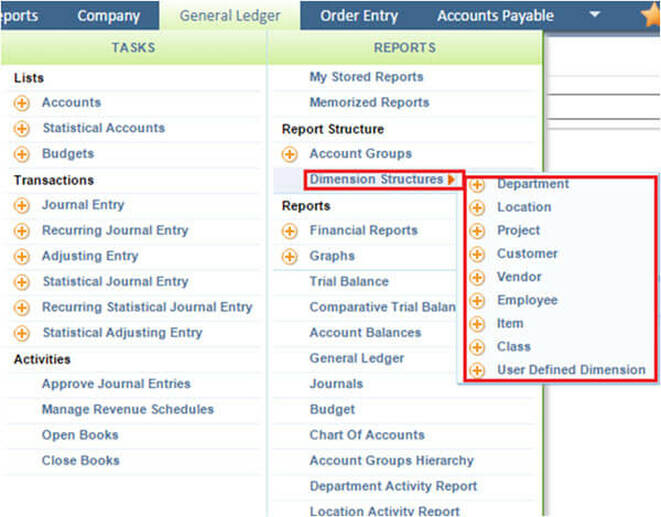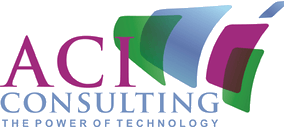The Sage Intacct dimensions capability offers an entirely new way to track and report on financial and operational data, while simplifying your chart of accounts. With this flexible financial foundation, you gain quick access to the insights that speed decision-making and help drive growth. Learn about this new way to simply your chart of Sage Intacct accounts and super charge your reporting.
Traditional Accounting Software ... Move Over
Traditional accounting software requires many individual accounts to track different business dimensions (departments, locations, etc.). This calls for hard coding and lots of heavy lifting from users. Adding a department, for example, could mean manually adding hundreds of new accounts. Or, to track 3 locations, 5 departments, and 5 projects, you’d need 75 account code combinations—and you’d end up with a complicated, unmanageable set of codes.
Sage Intacct chose a different route altogether to give businesses a simple way to manage their general ledger.
See also: Sage Intacct 2020 (What's New)
Sage Intacct chose a different route altogether to give businesses a simple way to manage their general ledger.
See also: Sage Intacct 2020 (What's New)
Sage Intacct Dimensions – A New Way to Track Your Business
With Sage Intacct dimensions, you can identify the dimensions that are the most relevant to your business and tag transactions to them. If your business grows or changes, you can continue to rely on your primary account code while adding new dimensions as you go. This opens new doors and gives you the freedom to manage accounting in a way that fits your unique needs.
For example, if you’re running a marketing agency, you’d probably be curious to know your expenses by project or your revenue by each individual line of service. Sage Intacct Dimensions make it all possible in a few simple clicks.
For example, if you’re running a marketing agency, you’d probably be curious to know your expenses by project or your revenue by each individual line of service. Sage Intacct Dimensions make it all possible in a few simple clicks.
Sage Intacct currently provides for various dimensions including:
- Department
- Location
- Customer
- Vendor
- Employee
- Item
- Class
- Project
Don’t see the dimension you’re looking for? That’s OK. Sage Intacct makes it easy to re-purpose and rename these standard dimensions.
For example if you’re a nonprofit managing various funds, you can easily rename a dimension to “funds.” Or, if you’re running a restaurant chain and want to analyze the profitability of a certain menu item between your different locations, you can create “location” and “item” dimensions. This feature can be tailored specifically to your business to bring the most value.
For example if you’re a nonprofit managing various funds, you can easily rename a dimension to “funds.” Or, if you’re running a restaurant chain and want to analyze the profitability of a certain menu item between your different locations, you can create “location” and “item” dimensions. This feature can be tailored specifically to your business to bring the most value.
Real-Time Perspective Delivers Real Business Value
Using this type of “tagging” methodology comes with many advantages. With visibility into the true context of your financial and operational data, you’ll be able to make smarter business decisions that drive profitable growth.
Sage Intacct Dimensions will also vastly improve your financial reporting so you can answer important business questions with speed and confidence. Rather than manually manipulating your data in Excel, you can use Sage Intacct drop-down list views that are designed to filter, group, and organize data by dimensions. Pulling data is easy and you can automatically produce reports tailored specifically to your business.
Dimensions will fundamentally improve your reporting, making it easier for you to get fast answers to your business questions.
Sage Intacct Dimensions will also vastly improve your financial reporting so you can answer important business questions with speed and confidence. Rather than manually manipulating your data in Excel, you can use Sage Intacct drop-down list views that are designed to filter, group, and organize data by dimensions. Pulling data is easy and you can automatically produce reports tailored specifically to your business.
Dimensions will fundamentally improve your reporting, making it easier for you to get fast answers to your business questions.
|
Guest Article By ACI Consulting
This article is a guest post provided by ACI Consulting. Proudly serving Sage software clients for over 20 years, ACI Consulting provides Intacct Consulting in Orange County and throughout Southern California. |




